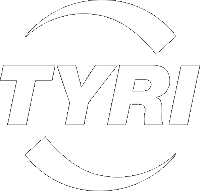Colour Temperature vs CRI
Light can be produced in an array of temperatures, even a white LED light can have different colour properties, from a warmer yellow to a bright blue hue. In contrast, light colour quality is measured as a value on the Colour Rendering Index (CRI), depicting how well colours are seen by the eye.
Colour Temperature
Colour temperature measures one characteristic of visible light and is rated against a Kelvin scale (K). Generally, the human eye functions more effectively when objects are illuminated by a light source that is closest to the mid-day sun, which is around 5400 K. From a health and safety perspective, this translates to a safer, more productive work environment.
Giving colour temperature real meaning and providing the most effective light for the machine operators can be a challenge. The temptation is to have a bright light to match that of the mid-day sun; however, this can have a detrimental effect for both the operator and those working around the machine. Increasing the Kelvin temperature to 6000 K also increases the blue hue of the LED, which can potentially cause irritation to the eye and lead to fatigue for the operator and glare to those around the machine. It is a fine balance between having a clean white light and having enough light for a safe working environment.
In some applications where other conditions such as dust or snow affect vision, a lower temperature light may be more suitable as it delivers less glare.
TYRI is happy to talk through your options for the best possible solution for your unique application.
Colour Rendering Index
Good colour rendering is a quality feature of artificial light compared to natural light. As you know, textiles in a shop can look totally different as in daylight. This is certainly not intended, but it is the result of poor colour rendering of the lighting in the shop.
The sun contains an even part of all spectral colours and thus has an optimal colour rendering index of 100. A high colour rendering makes colours in your work area look very natural. This is very important in mining where machine operators need to clearly see the colour differences. But also important for drivers of construction machines and agricultural machines where a high colour rendering is necessary to better see the ripeness or the condition of the harvest.
TYRI LED work lights 0909 and 1010 have a colour rendering index of 95 and a colour temperature of 4000 K! Have a look at them both in our product pages. If you have questions, just contact us.
TYRI has one of the broadest ranges of work lights available. Manufactured in ISO accredited facilities, they are tested to achieve IP69k and CISPR25/EN55025. They also undergo numerous environmental tests for temperature, vibration and salt spray resistance.
TYRI’s latest innovation, INTELLilight is a game changer when it comes to Colour Temperature. In an industry first, it is now possible to change the colour temperature of a work light;
“INTELLilight improves the entire work environment for operators. You get personalised lighting that acts according to each unique situation. Furthermore, you can easily dim the lighting and adjust the colour temperature from warm yellow light to cold blue light. If you choose to integrate sensors into the system, the lighting itself will increase the comfortability by ensuring that the lights perform the desired actions in different situations. For example, by dimming the light when the vehicle’s own lighting dazzles the operator, or by setting the light sensor to dim the vehicle’s own lights when passing another vehicle head-on or the oncoming vehicle’s lights. A radio-controlled system with an On/Off function also allows the lights to be switched on and off from a distance for increased safety.” explains Christian Wadell, TYRI Head of Research & Development.
TYRI also offer a range of lights with high CRI 95 values. A colour rendering index of 95 makes it easier for the drivers to distinguish the colour differences between rocks and the earth or the maturity of the harvest.
Gaining the correct light for your application is essential for a productive and effective work environment.






